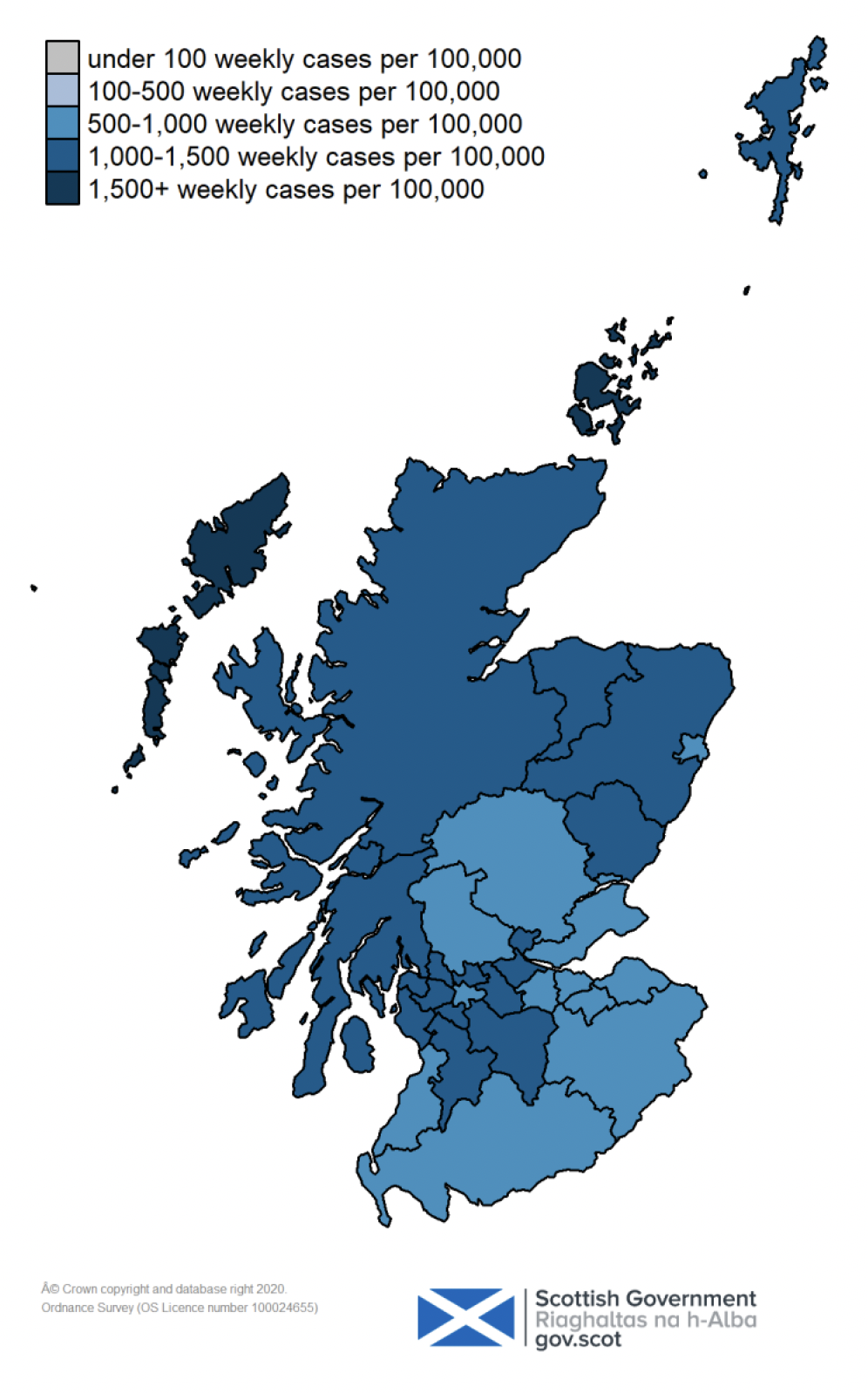Coronavirus (COVID-19): state of the epidemic - 11 March 2022
This report brings together the different sources of evidence and data about the Covid epidemic to summarise the current situation, why we are at that place, and what is likely to happen next.
This document is part of a collection
Situation by Local Authority within Scotland
From March 1, cases data includes reinfections (where a person has a positive test 90 days or more since a last positive test). For cases by specimen date, historical cases have been retrospectively updated to include reinfections from the start of the pandemic.
In the week leading up to 5 March 2022, Orkney Islands had the highest combined PCR and LFD weekly case rate by specimen date, reporting 2,290 cases per 100,000 population. Dumfries and Galloway had the lowest weekly combined LFD and PCR case rate in the same time period, reporting 794 cases per 100,000. The total combined LFD and PCR weekly case rates by specimen date per 100,000 had increased in 31 local authorities in the week leading up to 5 March 2022 compared with the weekly case rate leading up to 26 February 2022, while one local authority (Shetland Islands) saw a decrease in the same period (Figure 13)[68].

Please note that the following local authority hotspot modelling uses data to 7 March 2022 from several academic groups to give an indication of whether a local authority is likely to experience high levels of Covid-19. The local authority modelling has not been compiled via UKHSA into a consensus this week and is based on one modelling group. In less populated regions in which case numbers are small, there is a greater variation in model estimates, and hence increased uncertainty. This has led to Orkney Islands and Shetland Islands not being included this week. The modelled weekly case rate below is not directly comparable to the weekly case rate reported in the section and figure above.
Modelled rates of positive tests per 100,000 indicate that for the week commencing 20 March, all 30 of the local authorities included are expected to exceed 50 cases per 100,000 with at least 75% probability. The same 30 local authorities are also expected to exceed 100 cases per 100,000, with at least 75% probability.
24 out of the 30 local authorities are expected to exceed 500 cases per 100,000, with at least 75% probability. The exceptions are Aberdeen, Dundee, Highlands, Midlothian, Na h-Eileanan Siar, and Perth and Kinross.
Nine local authorities are expected to exceed 1,000 cases per 100,000 with at least 75% probability. These are Aberdeenshire, Angus, Argyll & Bute, East Ayrshire, East Dunbartonshire, Falkirk, North Ayrshire, North Lanarkshire and South Lanarkshire.
One local authority (East Ayrshire) is expected to exceed 2,000 cases per 100,000 with at least 75% probability[69].
Contact
There is a problem
Thanks for your feedback